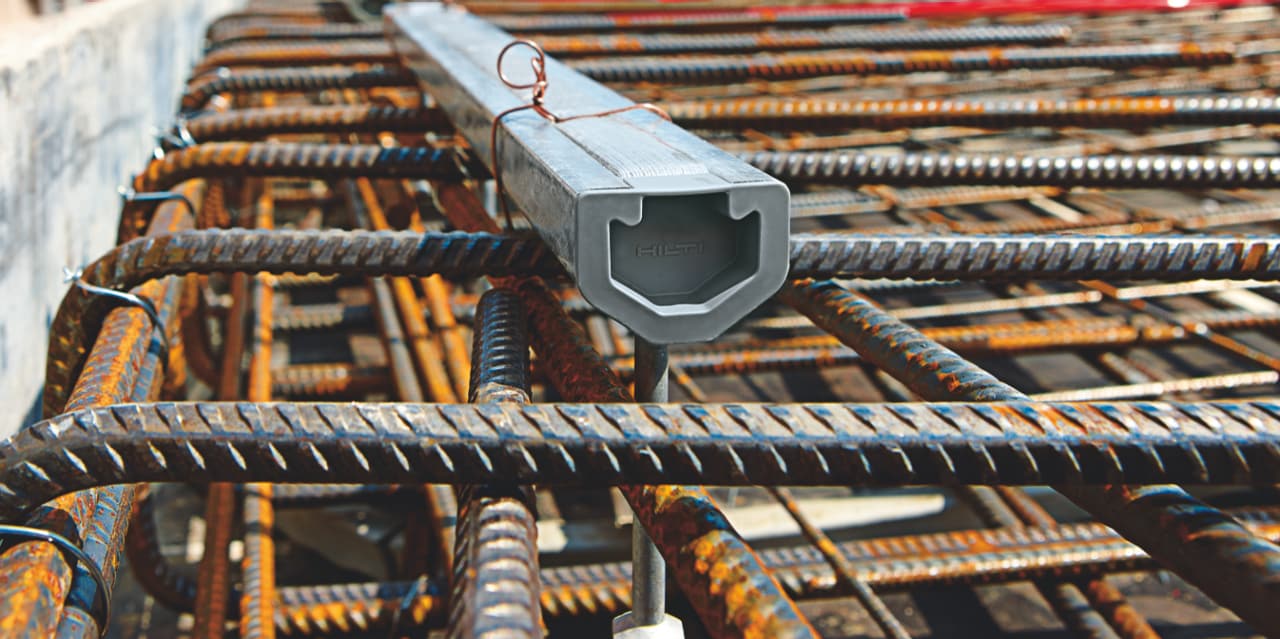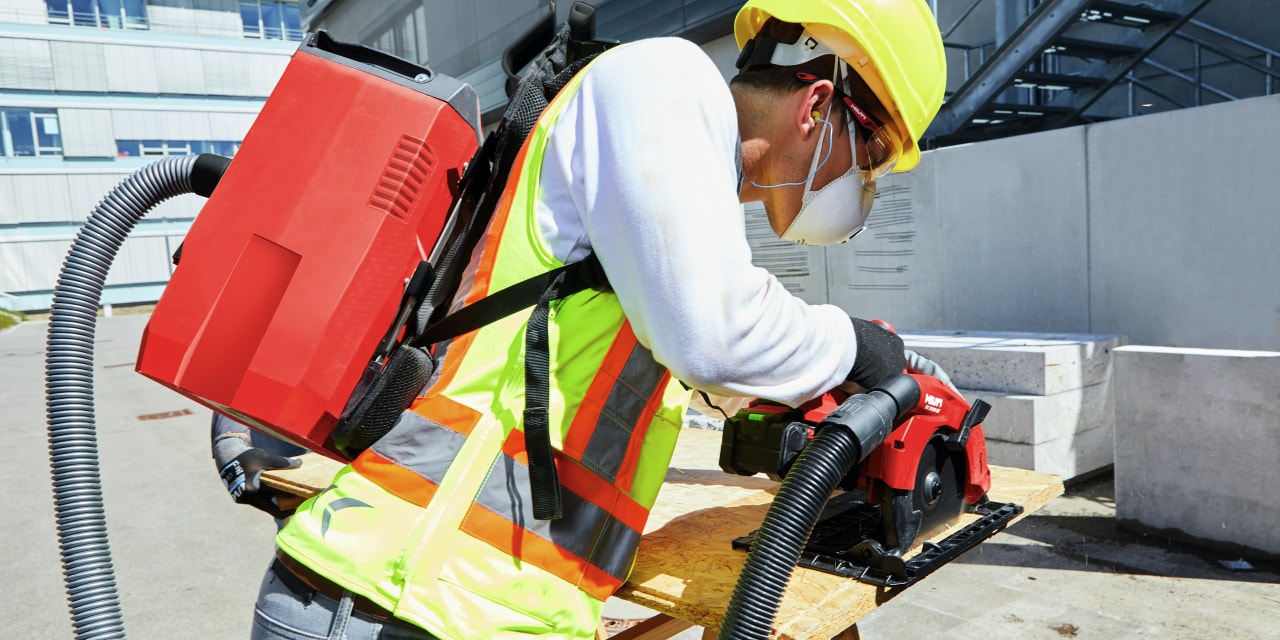- Home
- Solutions
- Solutions
- Construction Safety
- Construction Dust
Construction Dust

Control construction dust
Run safer, more productive jobsites by reducing dust
Everyday construction jobs like grinding, cutting, drilling, breaking and sanding create dust. This dust can cause serious illness and slow down your projects. It can also spread to surrounding areas, impacting people and the natural environment. Discover strategies and solutions to minimise the impact of construction dust.
What actually is dust?
Dust is made up of tiny solid particles that are highly dispersed and easily circulated in the air. Meaning exposure to dust can affect not just the worker generating the dust, but other people in the vicinity.
Dust particles can be extremely small and when smaller than 10 microns, are classified as fine dust or particulate matter (PM). Dust bigger than 10 microns is classified as coarse dust. To put this into context, the average human hair is about 60 microns thick.
WHAT TYPES OF DUST ARE THERE?
There is a variety of dust types that occur on a jobsite. Inhalable dust, such as wood dust, can be trapped in the mouth and nose and is less than 100 microns in size, affecting productivity and causing great discomfort for workers.
The most harmful is respirable dust or silica dust, which is less than 10 microns in size and penetrates deep into your lungs. This is generated through abrasive treatment like drilling, chiselling, sawing, or grinding of silica-containing materials like concrete, mortar, and sandstone.
WHICH WORKPLACE DO YOU PREFER?
Most people would prefer to work in a clean environment where body, clothes and surroundings stay clean and no personal protective equipment must be worn.
Working in clouds of dust also increase the risk of injuries due to reduced visibility and can distract employees because of eye irritations, sneezing, coughing or nose blowing. But that’s not the only reason to take control of dust.
EFFECTS of breathing in Silica dust!
Overexposure to fine dust is extremely dangerous and breathing it in regularly can lead to a build-up in the lungs. Once the dust particles have reached parts of the respiratory system, they interfere with oxygen and cause long term damage. This can lead to serious health problems like lung cancer, asthma, Chronic Obstructive Pulmonary Disease (COPD), and silicosis.
Every year, over 500 construction workers suffer fatalities from exposure to silica dust. Employers must take the correct measures to reduce their workers' exposure to dust while on the jobsite.

EFFECTIVE DUST CONTROL SOLUTIONS
Hilti has its own Dust Research Centre in Germany which plays a vital role in ensuring that Hilti power tools are designed and developed to control dust. Hilti’s Dust Experts are part of a community actively developing relevant standards like EN 50632.
John Saunders (HSE Scientist), who reviewed the Dust Research Centre, commented on the Hilti approach to tackle dust: “It’s clear that the design of extraction has not been added to the tool as an afterthought; rather, it has been embedded into the tool design at an early stage.”

Alternative technologies that reduce dust

Wet diamond drilling
Keep jobsites cleaner by collecting slurry created during wet diamond drilling. Units such as the DD-WMS water management system supply, filter and collect slurry for easy disposal.
DD-WMS 100 water management system
Direct fastening
Take the switch to the BX 3-22 battery-powered nailer, designed to be a cleaner, faster and virtually dust-free alternative to drilling.
BX 3 battery-powered nailer
Designing out concrete dust
Choose low-dust base materials or place our HAC cast-in anchor channels around the rebar before the concrete is poured, meaning little to no drilling, and therefore no concrete dust.
HAC cast-in anchor channelsDust control systems for all your jobs

Dust control for drilling
Remove up to 97% of dust when drilling with integrated dust removal systems like the TE DRS-4/6 on-tool dust collector, compatible with the TE 4-22 and TE 6-22 cordless rotary hammers.
Similarly, the TE-YD hollow drill bit – when used with SDS combihammers such as the TE 50-AVR and a wet and dry vacuum cleaner – provides virtually dust-free concrete drilling.
TE-DRS dust removal systems TE-YD hollow drill bit
Dust control for chiseling
Remove up to 95% of dust when chiseling with tools like the TE 2000-AVR concrete demolition hammer, combined with the TE DRS-B dust removal system and a universal vacuum cleaner.
TE DRS-B dust removal system TE DRS-Y dust removal system
Dust control for cutting
Dust extraction when cutting with cordless circular saws like the SC 6WL-22 or SC 30WR-22 is easier than ever – just connect a universal vacuum cleaner.
SC 6WL-22 cordless circular saw SC 30WR-22 cordless circular saw
Dust control for grinding
Virtually dust-free results when you combine tools such as the DG 150 concrete grinder with a universal vacuum cleaner.
DG 150 concrete grinderChoosing the right vacuum for your application

L Class (low risk)
L Class dust includes house dust, soft woods, and solid surface material.
The maximum allowable concentration of L class dust is > 1 mg/m³, this means that the vacuum cleaner needs to have a filtration efficiency of 99%.

M Class (medium risk)
Dust from hard woods, cement, concrete and tile cement as well as paints belong to the M class.
The maximum allowable concentration of M class dust is ≥ 0.1 mg/m³, with the vacuum cleaner having a filtration efficiency of 99.9%.

H class (high risk)
Typical H Class dust can be found in asbestos, mineral fibres, bitumen and artificial fibres such as glass wool.
The maximum allowable concentration of H class dust is < 0.1 mg/m³., with the vacuum cleaner showing a filtration efficiency of 99.995%.
To find out which Vacuum Cleaner class you require to comply with regulations, please visit the website of your Health & Safety authority.

System solutions for every dust challenge
Our products are built to overcome the many challenges that firms and users face everyday on the job site. In addition, selected products offer fully certified credentials to ensure you can work safely during many applications.
You can visit our dedicated construction dust FAQ page for more information or send us a message via the Contact us page to discuss your needs.




